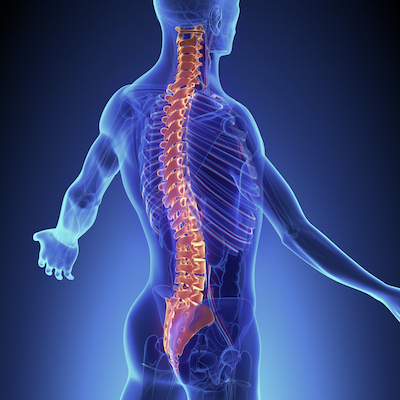
There’s no method so comprehensive and thorough at determining a person’s spinal health as Chiropractic BioPhysics (CBP). The depth at which every quantifiable aspect of the spine is documented allows for an incredible amount of focus to be directed at developing a treatment plan for corrective care.
Because every person’s spine is different, CBP takes into account a number of critical variables that are used to measure different spinal ailments and the scope at which they affect the person suffering from them. Some of the quantifiable aspects of CBP, made prevalent through radiological imaging and subsequent x-ray line drawing, include:
• Posture: Assessing the front and side views of a person’s spine allows CBP practitioners to see where deviations from the normal postural standards exist. This includes examining the center of the mass of the head, the rib cage, and the pelvis, from both front and side angles. Findings may yield information about compression or herniation at critical segments of the spine while a person is standing normally.
• Curvature: Differing from posture, which assess the spine on the Y-axis, curvature has to do with the health of the spine on the X-axis. Seeing the curvature of the spine from the sacral to the cervical regions means being able to deduce where issues exist. Using x-ray line drawing to juxtapose “ideal” position with relative position can diagnose issues such as lordosis or kyphosis, while also assisting a CBP chiropractor in structuring a corrective plan for minimizing or absolving these afflictions.
• Rotation: When vertebrae begin to twist within the spinal column it’s called a rotary subluxation. This type of unwanted spinal movement is particularly disruptive to nerve pathways and can create numerous long-term problems. Imaging will show rotations in all of their degrees, commonly gauged as Grade I, II, or III in terms of severity.
• Translation: As vertebrae start to shift sideways without rotating, it’s identified as a process called translation, which can result in a slight list to one side when a person is standing. Identifying the vertebrae that are moving means being able to properly migrate them back into place through targeted corrective treatment.
• Compression: Whether from sitting or poor posture, compression can occur when vertebrae are pushed together, causing the discs between them to herniate, degenerate, or shift. CBP strives to identify where compression is occurring and what the causes of it may be as they relate to the segments of the spine affected.
All of these details can be revealed with radiological imaging and careful consideration of the spine under a CBP assessment. Once identified, they allow a chiropractor to present a comprehensive overview of a person’s spinal health to them, to explain root causes of ongoing aliments and pain.
Because of the thoroughness of CBP and the precise action that can be taken based on information yielded by an assessment, it remains consistently a premier choice for sustainable chiropractic care.
To have your own spine evaluated for a complete picture of its health, make sure you’re scheduling a free exam at Ideal Spine Health Center in Boise, ID.
Chiropractic BioPhysics, or CBP, is one of the most scientific, researched, and results-oriented corrective care techniques. CBP-trained chiropractors aim to realign the spine back to health, eliminating nerve interference and addressing the source of pain, fatigue, and disease. As with all chiropractic care, CBP is gentle, painless, and non-invasive.

